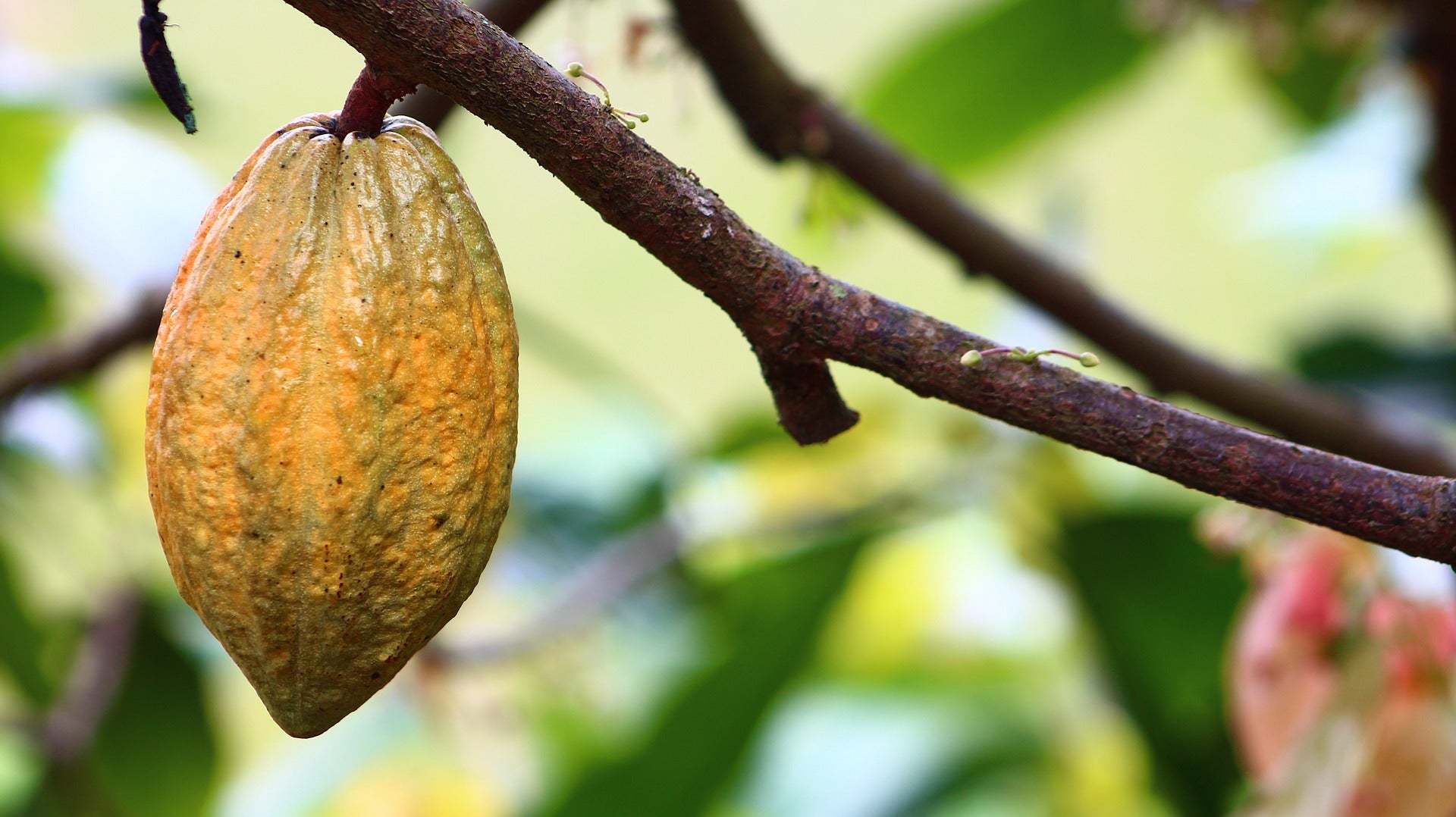Cocoa vs. Cacao. What's The Difference?
Published:
The Difference Comes Down to Much More Than Spelling
If you’ve ever curiously sampled a little unsweetened cocoa powder when baking, you’re probably already clued into the fact that a lot (including a lot of sugar) goes into making the chocolate flavor you know and love.
There’s as much distance between cocoa and cacao as there is between unsweetened cocoa powder and a Hershey’s bar. But they all come from the same source. So what’s the deal?
Cacao: the origin of so much goodness
To understand the difference between cacao, cocoa, and chocolate, it’s helpful to understand a little bit more about how the flavor gets from a plant to your bars, baked goods, and ICONIC drinks.
Theobroma cacao, or cacao for short, is (believe it or not) an evergreen tree. It’s native to tropical regions across Central and South America. And, like all trees, cacao produces seeds. What are the seeds called? Depends who you ask.
Some call them cacao pods, referring to the large pod in which the seeds grow. Some people call them cocoa beans, referring to the beans inside the pod and what they’ll be turned into once processed.
When you open the cacao pod, you’ll find about 40 almond-shaped seeds covered in pulp. Take a taste, we dare you. Or don’t — the flavor is likened to acidic dirt. So how do we get from there to the rich, earthy flavor of cacao or the decadent, sweet flavor of cocoa? It all comes down to the processing.
Those seeds are usually called beans and they’re processed to get both cacao and cocoa products.
How Theobroma cacao gets turned into stuff we eat and drink
Whether the beans are being turned into cacao or cocoa, the process starts the same. The cacao pod is opened and the beans inside, along with the pulp sticking to them are left to ferment for a few days. This fermentation process is really where the flavor magic happens.
Next, the beans get dried. From there, everything depends on what kind of product you want to create with them. Let’s follow them two places: to raw cacao nibs and unsweetened cocoa powder.
The raw cacao nib creation process
Once the beans are dry, they’re crushed. Processors remove the outer hulls and the result is raw cacao nibs. Pretty simple, right?
The cocoa powder creation process
Once the beans are dry, they’re roasted. This sweetens them and develops more of the flavor we associate with traditional chocolate. Next, the beans are crushed and the hulls are removed. (Yep, that step gets repeated no matter what product you’re making.) Then, the resulting nibs are ground into what’s called cocoa liquor. Whoa, calm down. We wish it was boozey, too, but it’s actually non-alcoholic liquor. Did you know that was a thing? We didn’t, either.
To get cocoa powder, the liquor is pressed. The pressure separates out the cocoa butter, leaving you with that dry, fine cocoa powder you know from baking.
If you want to make chocolate, you skip the pressing and mix the cocoa liquor right in with your other ingredients like — you guessed it — sugar. Darker chocolate has a higher percentage of cocoa than milk chocolate, so you get more health benefits and less not-so-healthy stuff (think: condensed milk) with it.
Which is healthier?
The chocolate fanatic in your life has probably caught you up to speed on the touted health benefits of chocolate. And, yes, both cacao and cocoa have some health benefits. But don’t go downing a big bag of M&Ms anytime soon. Chocolate, and especially milk and white chocolate, is absolutely loaded with sugar.
Where cocoa wins the day
Gram for gram, unsweetened cocoa powder is lower in both calories and fat than unsweetened cacao because the fat (aka: cocoa butter) is pressed out of the product. It’s also got more fiber, protein, and iron. Reap all these benefits by diving into a bottle of Chocolate Truffle ICONIC, which we make with real cocoa powder.
Where cacao triumphs
But raw cacao products hold onto more of cacao’s natural goodness because they’re less processed. That means you get a whole lot more antioxidants, which help your body fight off cancer and keep your heart healthy.
Plus, cacao has tryptophan in it, an essential amino acid. And your body uses that acid to make serotonin, a neurotransmitter that promotes wellbeing and happiness. Get some of that in your system by cracking open an ICONIC bottle of Cacao + Greens.
See? It’s science. Chocolate really does make you happy. Just choose less processed products like cacao or darker options when you go for cocoa to get more of the benefits and less of the junk your body doesn’t need.